- ● homepage
- ● archives
- ● restoration
- ● books
- ● big banners
- ● post board
- ■ neo's search
- ■ about us
- ■ 게재방법 안내
- 개인정보처리방침

- [email protected]
- Tel. 02_335_7922
- Fax. 02_335_7929
- 10:00am~04:30pm
- 월요일~금요일
- 3/3(월) 대체공휴일

회색지대-작품의 현장성
Gray Area–Space and Form展 2018_0316 ▶ 2018_0512 / 일,공휴일 휴관
초대일시 / 2018_0316_금요일_04:00pm
참여작가 첸치아옌_치치옌_박창서_체니안쥬 송진희_장리하오_왕웅치_신경철 타쿠지 시무라_펑지아청&황래이_챈칭
주최 / 국립대만예술대학교_요오창미술관 기획 / WANG Hung-chih_왕웅치
관람시간 / 10:30am~05:00pm / 일,공휴일 휴관
국립대만예술대학교 요오창미술관 Yo-Chang Art Museum, NTUA 59, Sec, 1, Daguan Rd, BanqiaoDist, New Taipei City 22058, Taiwan Tel. +886.(0)2.2272.2181(내선 2454,5) museum.ntua.edu.tw www.facebook.com/AMNTUA
Border is the boundary of two different materials or two different worlds, i.e., where two forces meet. This topic can be viewed from four perspectives, similarity, diversity, diffusion, and ambiguity. When dots connect like lines, a gap of irregularities and fluidity is thus created. This gap can be interpreted as the interruption or transition of two spaces, where similarity and diversity is allowed. But the gap is too vague too be entitled. It is a physical space where spiritual traits can be perceived; an uncertain area which paradoxically conveys messages. It is psychological, cultural, sentimental, rather than just being physically and geologically influential. This space, currently unable be defined or regulated, is what we called the "Gray Area." Therefore, the exhibition the Gray Area, inspired by "borders and gaps,"delivers the concept and present the area by paintings, installations, and videos, constituting different storylines with the use of linguistics, territoriality, time, and the most important element in contemporary art, history.

- 타쿠지 시무라_Here_디지털 C 프린트_가변설치_2018
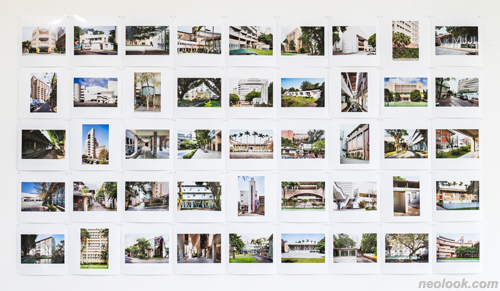
- 타쿠지 시무라_Elsewhere_디지털 C 프린트_10×15cm×36, 15×10cm×9_2018

- 박창서_단명하는선_합판, 철근석고가루_70×800×300cm_2018

- 회색지대-작품의 현장성展_국립대만예술대학교 요오창미술관_2018
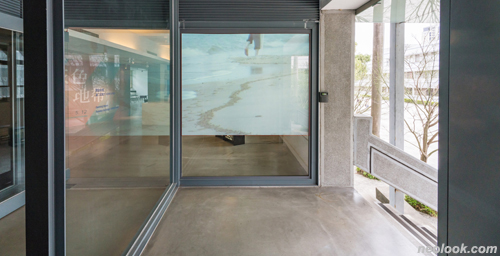
- 박창서_불규칙적간극_영상 퍼포먼스_00:05:08_2009

- 왕웅치_Gray area_가변설치_2018

- 왕웅치_Gray area_가변설치_2018

- 치치옌_World Aquarium_가변설치_2017

- 송진희_Jeu de paumes_영상 퍼포먼스_00:03:06_2007
The Works in the Space ● Does the "gray area"exist in between the artworks of the exhibition? Can we call the space between each artwork another "work"?How do we define the "area" of a work? The issue about the work on site centers that not only do the material and form of an artwork speak, but also the meaning and creativity of it deliver message. When the audience perceive the work on their retina, they exercise around to build up the relationship with the works and the surrounding area. Can the connection between works be captured directly or indirectly when the works are juxtaposed in the space? Further, the building of the exhibition venue has two floors with the stairs in the middle separating two symmetric spaces. The walls and four columns hold the spaces, making them visually flattened. The position of the works plays the vital role in the dialogues between the works and both the space and the audience. How the works ferment in the spaces underlines the balance between each work and between the works and the spaces, which is the primary issue of this exhibition.

- 신경철_T-HERE-90_리넨에 아크릴채색, 연필_193.9×112.1cm_2018

- 회색지대-작품의 현장성展_국립대만예술대학교 요오창미술관_2018

- 신경철_T-HERE-92_리넨에 아크릴채색, 연필_193.9×112.1cm_2018

- 첸치아옌_Shoes_혼합재료_가변설치_2013
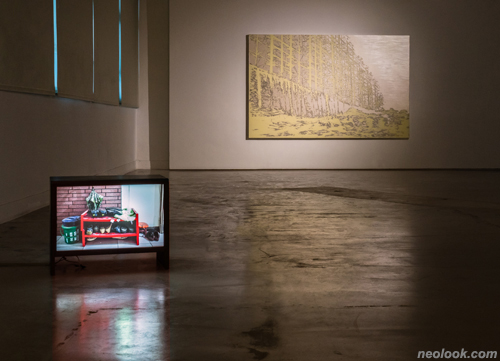
- 회색지대-작품의 현장성展_국립대만예술대학교 요오창미술관_2018

- 챈칭_Disappear_혼합재료_가변설치_2016
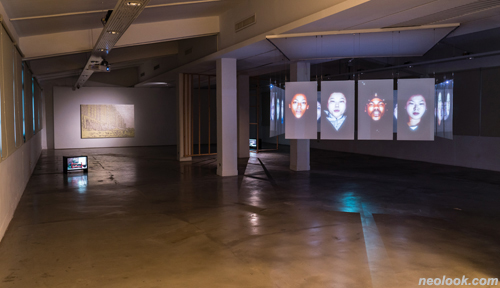
- 회색지대-작품의 현장성展_국립대만예술대학교 요오창미술관_2018
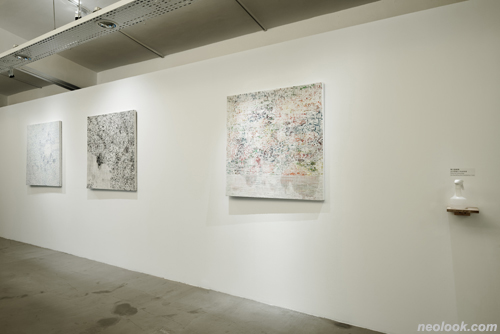
- 체니안쥬_Painting archeology_혼합재료_100×100cm×4_2016

- 회색지대-작품의 현장성展_국립대만예술대학교 요오창미술관_2018
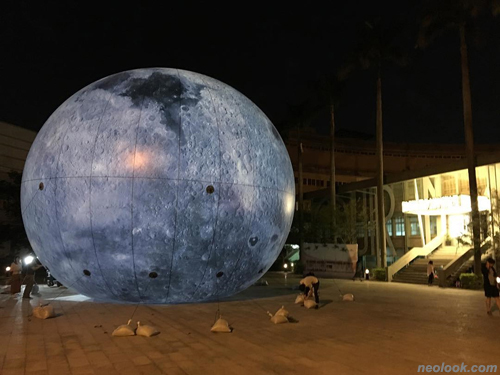
- 펑지아청&황래이_Moon haze_혼합재료_가변설치_2015
12 Artists and 16 Pieces of Works ● There are 16 pieces of works made by 12 artists who have travelled to or stayed in Europe and Asia. The wandering between reality and simulation of SHIMMURA Takuji and FENG Jia-Cheng & HUANG Lei; the fluidity of uncertain gaps and the uncertainty of areas by SONG Jin-Hee and PARK Chang-Seo; the search of everyday memory and the examination of physical space fromWANG Hung-Chih, SHIN Kyung-Chul, and CHEN Chia-Jen; the intertextual framing of both the narrative and translation of subjects and their surrounding by CHEN Qing and CHI Chien; the combination and exploration of paintings and their carriers by TSAI Nian-Jue and CHUANG Li-Hao are all the issues raised in this exhibition. ■ OUR-Museum
Vol.20180316h | 회색지대-작품의 현장성展

